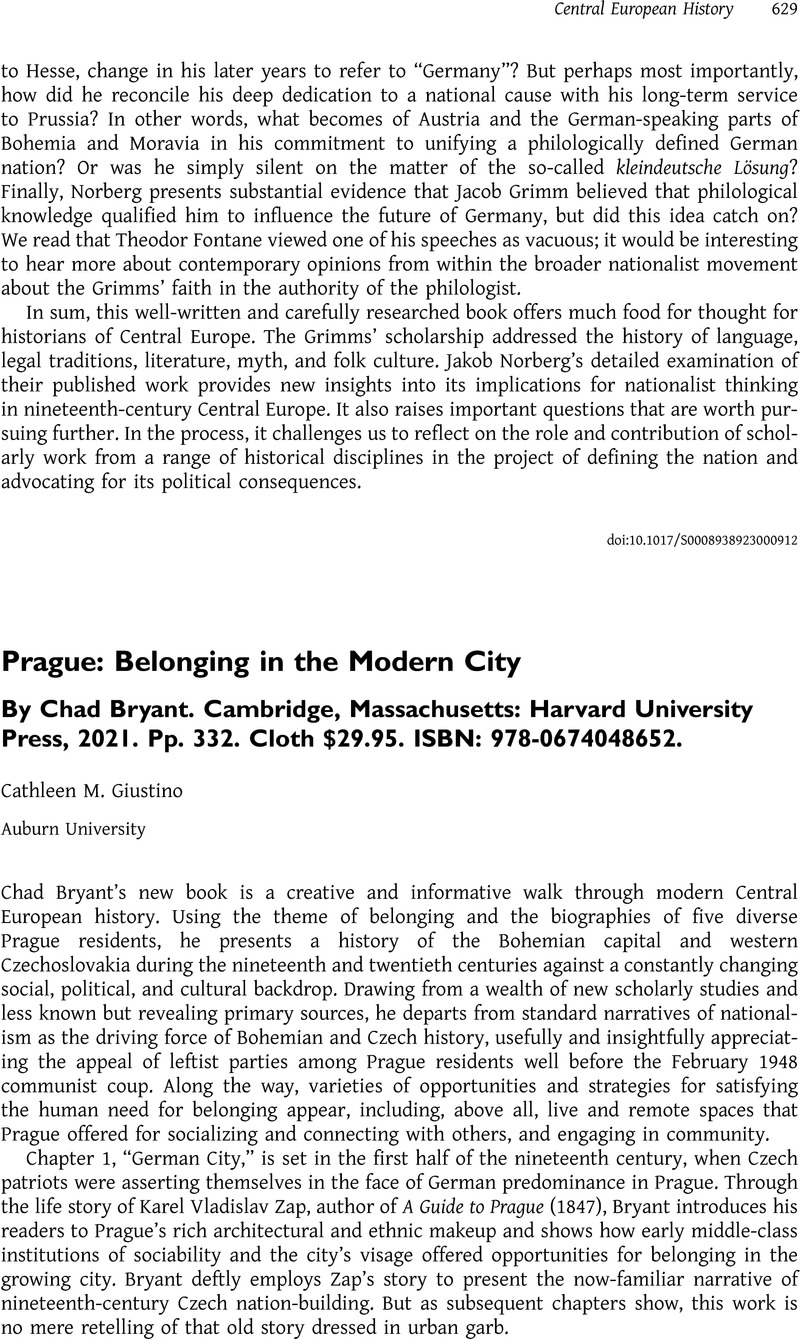No CrossRef data available.
Article contents
Prague: Belonging in the Modern City By Chad Bryant. Cambridge, Massachusetts: Harvard University Press, 2021. Pp. 332. Cloth $29.95. ISBN: 978-0674048652.
Review products
Prague: Belonging in the Modern City By Chad Bryant. Cambridge, Massachusetts: Harvard University Press, 2021. Pp. 332. Cloth $29.95. ISBN: 978-0674048652.
Published online by Cambridge University Press: 28 December 2023
Abstract
An abstract is not available for this content so a preview has been provided. Please use the Get access link above for information on how to access this content.

- Type
- Book Review
- Information
- Copyright
- Copyright © The Author(s), 2023. Published by Cambridge University Press on behalf of Central European History Society of the American Historical Association


